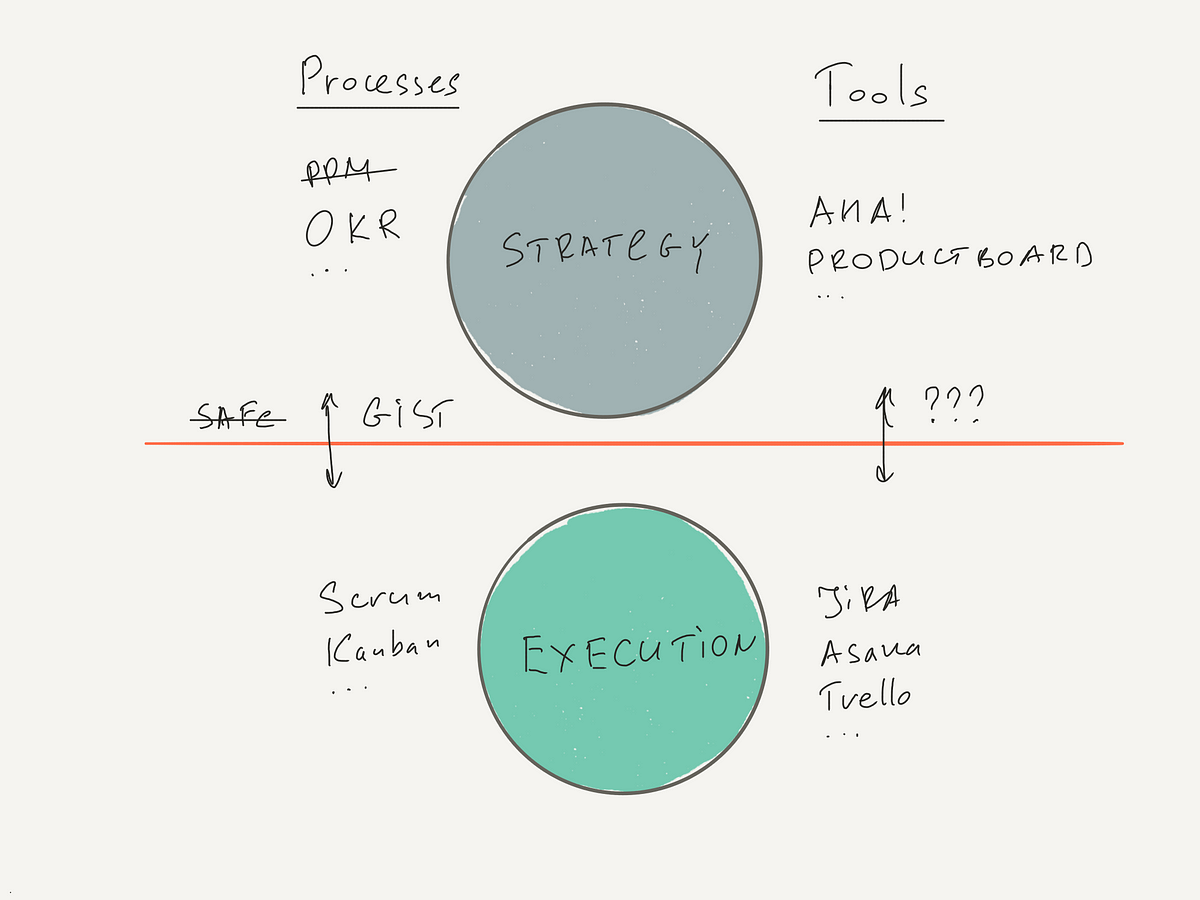Strategy-Implementation Mismatch
JIRA is easy to hate. The latest article trashes JIRA and calls it an anti-pattern for software development. The main problem is work atomization and lost connection between “tickets” and vision:
One thing that writing elegant software has in common with art: its crafters should remain cognizant of the overall macro vision of the project, at the same time they are working on its smallest micro details. JIRA, alas, implicitly teaches everyone to ignore the larger vision while focusing on details. There is no whole.
This is true. However, this problem is not JIRA-specific. This problem exists in almost all project management processes and methodologies. As a results, all tools inherit it from implemented processes. It is easy to blame JIRA, but we should blame other things.
The problem has a name: strategy-implementation mismatch. How Task A helps to address Problem B? Is it important enough to work on? Is this problem even real? Why am I programming this user story? Do I have bullshit job or not?
 Strategy-implementation mismatch in processes and tools.
Strategy-implementation mismatch in processes and tools.
Processes & Tools
Extreme Programming focuses on technical things mainly. There is constant communication with a customer and system metaphor (which is a technical document in fact). Nothing high level.
SAFe is different. It tries to glue everything together. Unfortunately, only old-school managers do like SAFe (it helps to keep they jobs and maintain status quo). Developers don’t get portfolio management and tend to ignore it. A word “Lean” near “portfolio management” looks like a bad joke. As a result, we still have strategy-implementation mismatch in practice.
We have good frameworks on a high level though. For example, OKR is good enough. It helps to break things into hierarchy of Objectives and glue teams and departments goals. However, OKR has poor relation with work. There are many tools for OKR management, but none of them are good at execution tracking.
GIST by Itamar Gilad is a beam of light in the dark. It has great strategy decomposition with a scientific approach in its heart. It has decent connection to execution level. Everything is there. Unfortunately, there are no software tools that support GIST. I hope Fibery will be the first one.
There are many good tools to plan strategic goals: Aha!, ProductBoard, etc.
There are many good tools to track work: JIRA, Asana, Trello.
However, there are no tools that can do both things in a good way. All current solutions are based on integrations (Aha! + JIRA, for example). But integration just accepts strategy-implementation mismatch and leaves it intact. Integration is a problem manifestation, not a good solution.
Documents
Another critique of JIRA is lack of documents:
Allow me to propose something shocking and revolutionary: prose. Yes, that’s right; words in a row; thoughtfully written paragraphs. I’m not talking about huge requirements documents. I’m talking about maybe a ten-page overview describing the vision for the entire project in detail, and a six-page architectural document
JIRA tries to address this via Confluence. However, these are two separate tools. And it naturally forms a gap between documents and work. This gap is already noticed and some new vendors are working on solutions (Notion and Coda).
I think strategy-implementation mismatch should be solved methodologically first (GIST is a good attempt). Then we can connect everything together in a single tool: Strategy, Documents and Work.